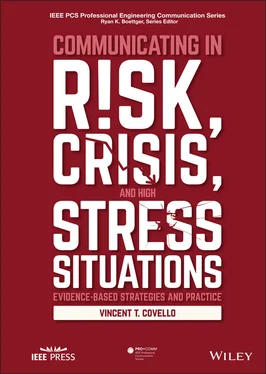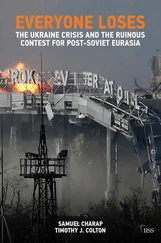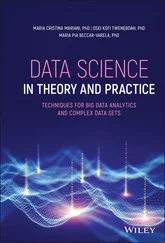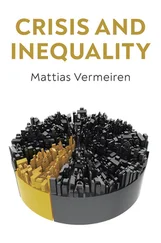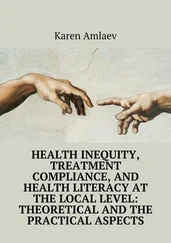64 Mileti, D.S., Sorenson J. (1990). Communication of Emergency Public Warnings. ORNL‐6609. Oak Ridge, TN: Oak Ridge National Laboratory.
65 Mileti, D.S. (2017). Public Response to Disaster Warnings. http://swfound.org/media/82620/PUBLIC%20RESPONSE%20TO%20DISASTER%20WARNINGS%20‐%20Dennis%20S.%20Mileti.pdf. Accessed May 25, 2017.
66 Mileti, D., Nathe, S., Gori, P., Greene, M., Lemersal, E. (2004). Public Hazards Communication and Education: The State of the Art. Boulder, CO: Natural Hazards Center.
67 Morgan, M.G., Fischhoff, B., Bostrom, A., Atman, C. J. (2002). Risk Communication: A Mental Model Approach. Cambridge, UK: Cambridge University Press.
68 National Research Council (1989). Improving Risk Communication. Washington, D.C.: National Academy Press.
69 National Research Council (1996). Understanding Risk: Informing Decisions in a Democratic Society. Washington, DC: National Academy Press.
70 National Research Council. (2013). Public Response to Alerts and Warnings Using Social Media: Report of a Workshop on Current Knowledge and Research Gaps. Washington, DC: National Academies Press.
71 National Oceanic and Atmospheric Administration. US Department of Commerce. (2016). Risk Communication and Behavior. Best Practices and Research. Washington, DC: National Oceanic and Atmospheric Administration.
72 National Academy of Sciences/National Research Council. (2008). Public Participation in Environmental Assessment and Decision Making. Panel on Public Participation in Environmental Assessment and Decision Making, eds. T. Dietz and P.C. Stern. Committee on the Human Dimensions of Global Change, Division of Behavioral and Social Sciences and Education. Washington, DC: National Academies Press.
73 National Academy of Sciences (2014). The Science of Science Communication II: Summary of a Colloquium. Washington, DC: The National Academies Press.
74 National Academy of Sciences (2017) Communicating Science Effectively. Washington, D.C.: The National Academies Press
75 Oliver‐Smith, A., Hoffman, S., eds. (1999). “What is a Disaster?” in The Angry Earth: Disaster in Anthropological Perspective. New York: Routledge.
76 Peters, E. (2012). “Beyond comprehension: The role of numeracy in judgments and decisions.” Current Directions in Psychological Science 21(1):31–35.
77 Peters, R., McCallum, D., Covello, V. T. (1997). “The determinants of trust and credibility in environmental risk communication: An empirical study.” Risk Analysis 17(1):43–54.
78 Pidgeon, N., Kasperson, R., Slovic, P. (2003). The Social Amplification of Risk. Cambridge University Press.
79 Renn, O. (2008). Risk Governance: Coping with Uncertainty in a Complex World. London, UK: Earthscan.
80 Renn, O. (2009). “Risk communication,” in Handbook of Risk and Crisis Communication, eds. R.L. Heath, H.D. O’Hair. New York: Taylor and Francis/Routledge.
81 Renn, O., Levin, D. (1991). “Credibility and trust in risk communication,” in Communicating risks to the public, eds. R. Kasperson, P. Stallen. Dordrecht, The Netherlands: Kluwer Academic Publishers.
82 Reynolds, B. (2014). Crisis and Emergency Risk Communication. Atlanta, GA: US Centers for Disease Control and Prevention.
83 Reynolds, B., Seeger, M. W. (2005). “Crisis and emergency risk communication as an integrative model.” Journal of Health Communication 10:43–55.
84 Rock, D. (2008). “SCARF: A brain‐based model for collaborating with and influencing others.” Neuro Leadership Journal 1:1–7.
85 Rodrıguez, H., Dıaz, W., Santos, J., Aguirre, B. (2007). “Communicating risk and uncertainty: Science, technology, and disasters at the crossroads,” in Handbook of Disaster Research, eds. H. Rodríguez, E.L. Quarantelli, R.R. Dynes. New York: Springer.
86 Rowan, K. E. (1991). “Goals, obstacles, and strategies in risk communication: A problem‐solving approach to improving communication about risks.” Journal of Applied Communication Research, 19:300–329.
87 Sandman, P.M. (1989). “Hazard versus outrage in the public perception of risk,” in Effective Risk Communication: The Role and Responsibility of Government and Non‐Government Organizations, eds. V.T. Covello, D. B. McCallum, M.T. Pavlova. New York: Plenum.
88 Scarlett, H. (2019). Neuroscience for Organizational Change: An Evidence‐based Practical Guide to Managing Change (2nd Edition). London and New York: Kogan Page Limited Publishing Co.
89 Sedej, T., Justinek, G. (2017). Effective tools for improving employee feedback during organizational change, In Organizational Productivity and Performance Measurements Using Predictive Modeling and Analytics, eds. M. Tavana, K. Szabat, K. Puranam. Hershey, PA: IGO Global.
90 Seeger, M.W. (2006). “Best practices in crisis communication: An expert panel process.” Journal of Applied Communication Research 34(3):232–44.
91 Seeger, M. W., Sellnow, T. L., Ulmer, R. R. (2003). Communication and Organizational Crisis. Westport, CT: Prager
92 Sheppard, B., Janoske, M., Liu, B. (2012). “Understanding Risk Communication Theory: A Guide for Emergency Managers and Communicators.” Report to Human Factors/Behavioral Sciences Division, Science and Technology Directorate. College Park, MD: US Department of Homeland Security.
93 Slovic, P. (1987). “Perception of Risk.” Science 236 (4799):280–285.
94 Slovic, P. (1999). ‘Trust, emotion, and sex.” Risk Analysis 19(4): 689–701.
95 Slovic, P. (2000). The Perception of Risk. London, UK: Earthscan.
96 Slovic, P. (2016). “Understanding perceived risk: 1978‐2015.” Environment: Science and Policy for Sustainable Development 58(1):25–29.
97 Slovic, P., M. Finucane, L., Peters, E., MacGregor, D.G. (2004). “Risk as analysis and risk as feelings: Some thoughts about affect, reason, risk, and rationality.” Risk Analysis 24(2): 311–322.
98 Sellnow, T.L., Ulmer, R.R., Seeger, M.W. (2009). Effective Risk Communication: A Message‐Centered Approach. New York, NY: Springer.
99 Sorenson, J.H. (2000). “Hazard warning systems: Review of 20 years of progress.” Natural Hazards Review 1:119–125.
100 Stallen, P. J. M., Tomas, A. (1988). “Public concerns about industrial hazards.” Risk Analysis 8(2):235–245.
101 Steelman, T. A., and McCaffrey, S. (2013). “Best practices in risk and crisis communication: Implications for natural hazards management.” Natural Hazards 65(1):683–705.
102 Tversky, A., Kahneman, D. (1974). “Judgment under uncertainty: Heuristics and biases.” Science 185(4157):1124–1131.
103 Ulmer, R., Sellnow, T., Seeger, M. (2011). Effective Crisis Communication: Moving from Crisis to Opportunity. Thousand Oaks, CA: Sage Publications.
104 United Nations International Strategy for Disaster Reduction. (2004). Living with Risk: A Global Review of Disaster Reduction Initiatives. New York: United Nations International Strategy for Disaster Reduction.
105 US Centers for Disease Control and Prevention (2014). Crisis and Emergency Risk Communication. Atlanta, GA: US Centers for Disease Control and Prevention.
106 US Environmental Protection Agency. (2005). Superfund Community Involvement Handbook. EPA 540‐K‐05‐003. Washington, D.C.: US Environmental Protection Agency.
107 US Department of Health and Human Services. (2006). Communicating in a Crisis: Risk Communication Guidelines for Public Officials. Washington, D.C.: US Department of Health and Human Services.
108 US Occupational Safety and Health Administration. (2020). Hazard Communication. Washington, D.C: US Occupational Safety and Health Administration. Occupational Safety and Health. Accessed at: https://www.osha.gov/hazcom
109 Walaski, (Ferrante), P. (2011). Risk and Crisis Communications: Methods and Messages. Hoboken, NJ: Wiley.
Читать дальше
